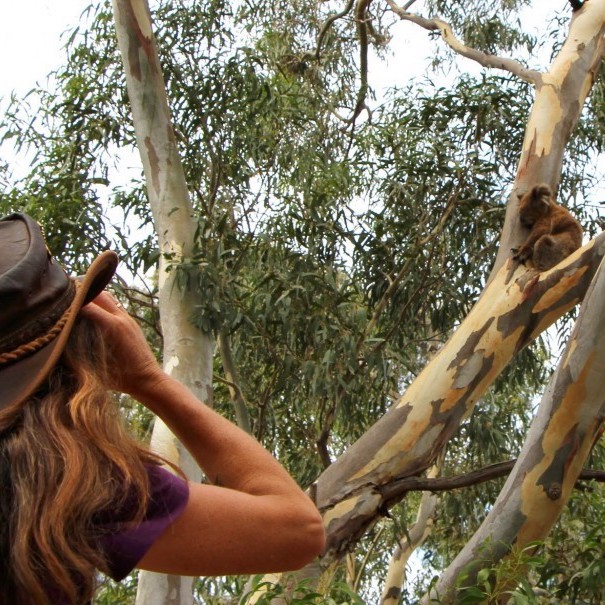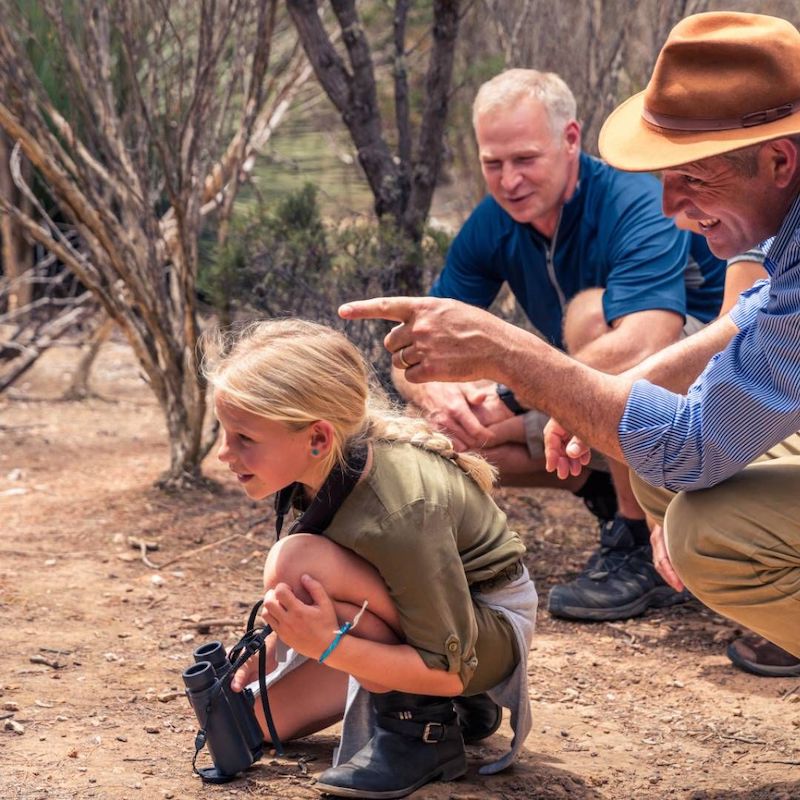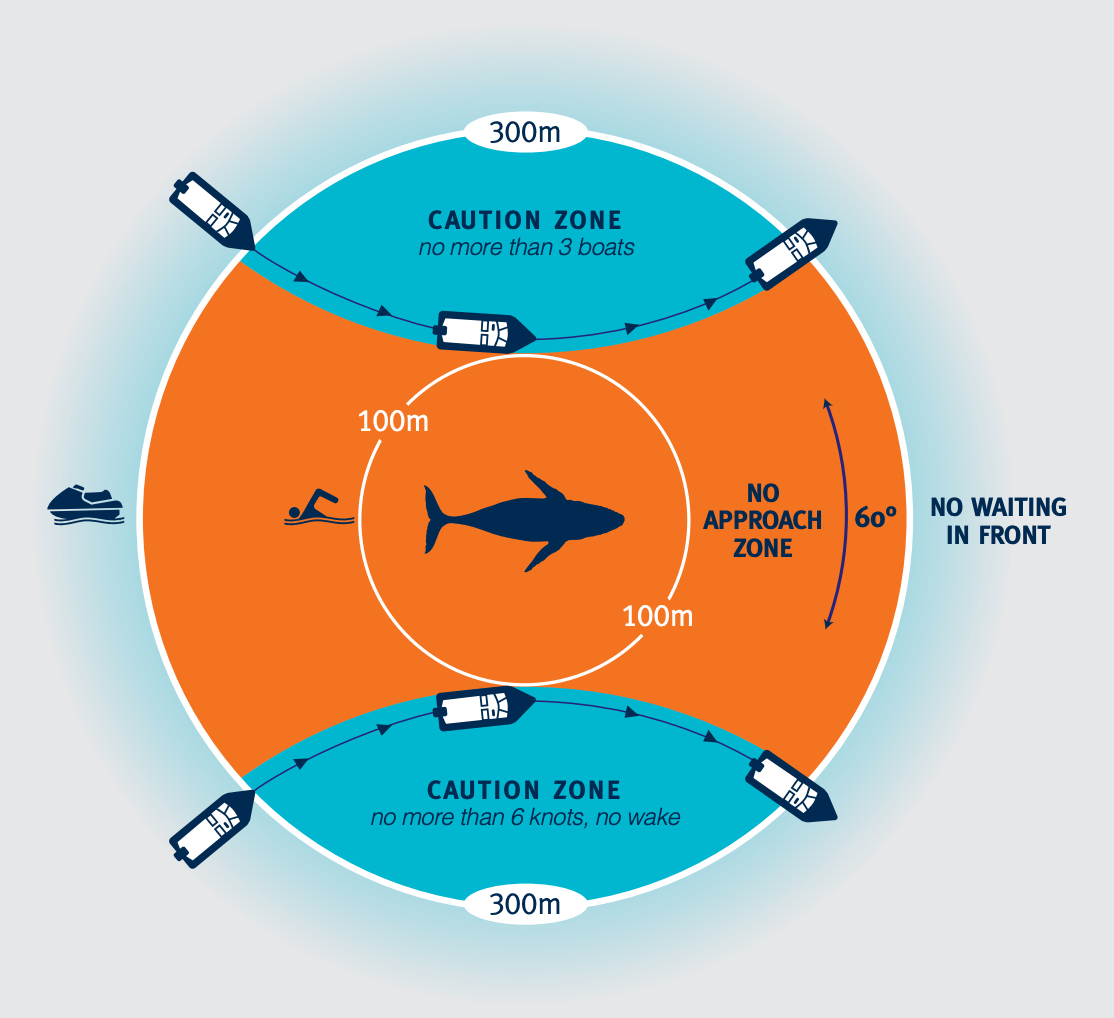- Home
- Sustainability
- SDG 4: Quality Education - Code of Conduct
SDG 4: Quality Education - Code of Conduct
 Code of Conduct for Wildlife Interactions
Code of Conduct for Wildlife Interactions
Australian Wildlife Journeys was founded upon a desire to increase the awareness and preference for travellers from across the globe to connect with our unique wildlife in the wild.
As wild encounters are central to the collective’s experiences, the long-term survival and health of the wildlife we seek to observe is critical. We pursue responsible tourism principals where ‘shared space’ is at the forefront of the experience, adapting our behaviour and that of our guests, so disturbance of wildlife is minimised when we visit them in their habitat.
We strongly advocate that visitors do not feed, touch or handle wild animals, but follow an ethos of observation from responsible distances. This approach is based on scientific research into maintaining the wellbeing of our wild animal populations, and provides a richer experience for guests as our guides interpret natural behaviours and social group interactions.
Beyond certifications from various bodies including Ecotourism Australia, Responsible Travel, The International Ecotourism Society and the Global Sustainable Tourism Council, several members have developed their own code of conduct or guidelines in relation to observing particular species in their area. Our goal is to go beyond just educating guests on our tours, but publishing and promoting these policies to the wider travel and global community.
Sustainable Koala Watching Code

Echidna Walkabout Nature Tours has been at the forefront of policy development for responsible Koala viewing based on over 27 years of research. In 2006, the organisation launched the Sustainable Koala Watching Code, implementing a welfare policy for guides, researchers and staff members in order to reduce human behaviours that cause Koalas to respond negatively as much as possible. This includes policies such as maintaining a distance of 10 metres (horizontally) from any wild Koala, never surrounding a Koala’s tree and avoiding excessive movement or noise around wild Koalas.
Interestingly, a recent scientific study has found that even captive Koalas subjected to people at close proximity (5 metres) do experience higher levels of stress than when people are further away, highlighting the importance of this requirement. Given that the organisation often visits and studies the same Koalas on a regular basis, this code has enabled a positive, or at least benign relationship to form with these wild Koalas.
Protecting Subspecies and Iconics of Kangaroo Island

Kangaroo Island separated from mainland Australia around 10,000 years ago, due to rising sea level after the last glacial period. Due to this long isolation, the island is renowned for the number of subspecies and as a critical breeding, resting or feeding ground for rare species. To reinforce responsible behaviours around these iconic species unique to the island, Exceptional Kangaroo Island has developed a Wildlife Code of Conduct and Guest Briefing Card referencing responsible behaviours for iconic species including the Glossy-Black Cockatoo, Hooded Plover, Australian Sea-lion, Kangaroo Island Kangaroo and Short-beaked Echidna.
This involves sharing a factsheet educating people about sensitive sites and times such as courtship or breeding season that require increased awareness of possible disturbances, such as avoiding known nest hollows of Glossy Black-Cockatoos, beach nesting sites of Hooded Plovers and breeding times for Australian Sea-lions where increased stresses in the colony can bring increased risk to observers. This also reinforces the importance of appropriate behaviour around more elusive animals on the mainland such as the Short-beaked Echidna, who can suffer from “capture myopathy”, which is death or shock due to handling stress.
Red-filtered Flashlights for our Nocturnal Beauties

Many of Australia’s marsupials are more active at night, with several members such as Murray River Trails, Premier Travel Tasmania and FNQ Nature Tours integrating nocturnal walks as an integral part of their regional experiences. Although spotlighting is a fantastic means of revealing some of Australia’s most endearing creatures, white torches or spotlights can significantly disturb our marsupials, due to the greater sensitivity of their pupils to light compared with humans. High-powered spotlights effect the ability for pupils to function properly for extended periods of time, leaving them blinded temporarily.
For this reason, we share with guests the importance of using red-filtered spotlights along with prohibiting flash photography. FNQ Nature Tours has developed a Nocturnal Viewing Booklet, that states guidelines for behaving responsibly during evening walks to minimise the disturbance and vulnerability of many rare species of the Wet Tropics.
Be Whale Aware and Be Dolphin Wise
 Pacific Whale Foundation Eco-Adventures Australia has developed a series of best practice factsheets for ocean users and boaters who wish to view whales and dolphins. The “Be Whale Aware” and “Be Dolphin Wise” guidelines are designed to educate seagoers that their presence can affect marine wildlife and habitat. Marine mammals often engage in important social and behavioural activities that may not be apparent to a casual viewer. These factsheets reinforce that approaching marine animals too closely or too quickly in a vessel often disrupts these behaviours and causes unnecessary stress.
Pacific Whale Foundation Eco-Adventures Australia has developed a series of best practice factsheets for ocean users and boaters who wish to view whales and dolphins. The “Be Whale Aware” and “Be Dolphin Wise” guidelines are designed to educate seagoers that their presence can affect marine wildlife and habitat. Marine mammals often engage in important social and behavioural activities that may not be apparent to a casual viewer. These factsheets reinforce that approaching marine animals too closely or too quickly in a vessel often disrupts these behaviours and causes unnecessary stress.
